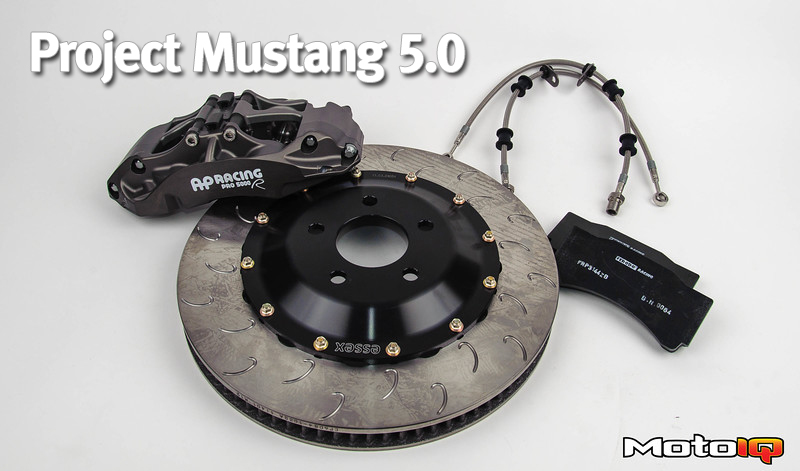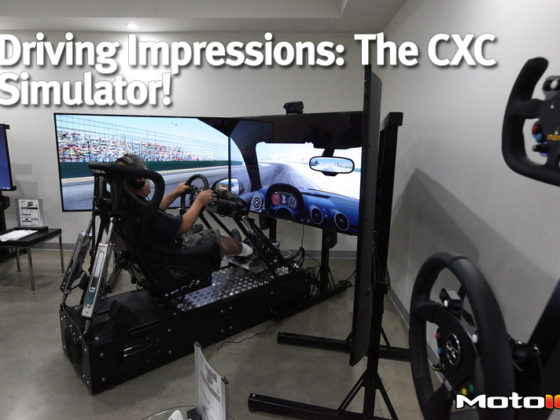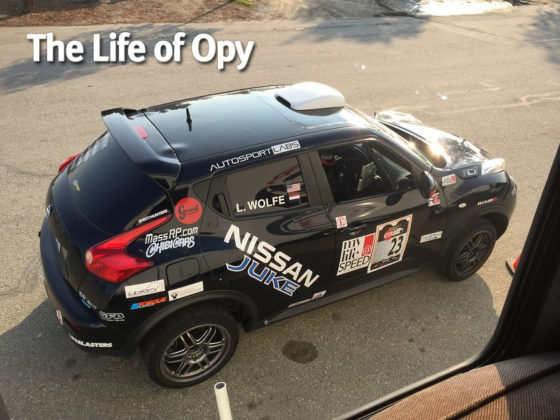,
 Essex Racing is a supplier of Ferodo brake pads. For our kit they supplied us with some pads using the DS1.11 compound. DS1.11 is a ceramic based compound made of a material called Siloxane. Siloxane does not decompose with heat.
Essex Racing is a supplier of Ferodo brake pads. For our kit they supplied us with some pads using the DS1.11 compound. DS1.11 is a ceramic based compound made of a material called Siloxane. Siloxane does not decompose with heat.DS1.11 is a heavy duty, long lasting, endurance type material that works great with heavy cars. It has a wide operating temperature range from 200 to 700c producing a high coefficient of friction of 0.46 in this range. The pad is compression resistant which helps keep a firm pedal and the compound is supposed to be very easy on rotors as well.
 Essex supplied their rotors for our kit which uses an AP Racing J-Hook disc. The Essex rotor is a huge 372mm in diameter and 34mm in thickness, up from the stock, nothing to sneeze at 355mm diameter and 32mm in thickness.
Essex supplied their rotors for our kit which uses an AP Racing J-Hook disc. The Essex rotor is a huge 372mm in diameter and 34mm in thickness, up from the stock, nothing to sneeze at 355mm diameter and 32mm in thickness.The Essex parts rotor is a two-piece part which uses an alloy center section or hat to adapt the disc to the car. This two piece construction enables the Essex rotor to be considerably lighter than the stock part.
 Most of the cooling air that enters a brake disc comes from the back side of the discs, particularly if brake ducts are being employed.
Most of the cooling air that enters a brake disc comes from the back side of the discs, particularly if brake ducts are being employed.OEM discs have narrow inlet ports and/or obstructions blocking the disc vanes, the AP Racing disc offers a clear path for cooling air to enter and flow through the disc. The result is significantly cooler discs that are less prone to cracking and wear.
 The AP Racing discs have a huge amount of aerodynamically shaped vanes. 84 of them to be exact.
The AP Racing discs have a huge amount of aerodynamically shaped vanes. 84 of them to be exact.A high number of vanes gives more internal surface area for improved heat transfer and better support for the friction face, especially at high temperatures. This improved support and more internal surface area means less cracking, less friction face distortion, improved pad contact, cooler running and longer service life.
More vanes mean a higher airspeed, less air recirculation through the disc’s body and better heat transfer through the rotor as well. CFD or computational Fluid Dynamics was used to optimize the airflow through the rotor. The rotors are directional for maximum air pumping efficiency.
 The AP Racing discs use an unusual J-hook slotting pattern which improves performance over conventional slotting or drilling. When you cut a slot or drill a hole in a disc you create a cool spot in the area around the slot or hole. Cool spots in the friction face of the disc create internal stress and increase the likelihood of the disc cracking. They also cause the face of the disc to distort unevenly, leading to uneven transfer film deposits, vibration, and judder. Most racing rotors typically have straight slots, which tend to leave cool spots across the disc face between the slots.
The AP Racing discs use an unusual J-hook slotting pattern which improves performance over conventional slotting or drilling. When you cut a slot or drill a hole in a disc you create a cool spot in the area around the slot or hole. Cool spots in the friction face of the disc create internal stress and increase the likelihood of the disc cracking. They also cause the face of the disc to distort unevenly, leading to uneven transfer film deposits, vibration, and judder. Most racing rotors typically have straight slots, which tend to leave cool spots across the disc face between the slots.During exhaustive R&D testing, AP’s J-Hook design was found to create an even temperature over the friction face of the disc. The hooks are spaced out as evenly as possible with a slight overlap to promote even heat distribution and minimal distortion. This was found to greatly reduce cracking and promote an even transfer layer of pad material on the disc.
The J Hook slot pattern produces a greater number of leading edges for the pads to bite into compared to a curved slot pattern. While this is noisier when applying the brakes, the benefits of even heat distribution, crack resistance, improved material transfer during bed-in, and more bite far outweigh the slight increase in NVH.
 The AP Racing disc hats are CNC machined from 6061 heat-treated aircraft aluminum, with a hard anodized finish for improved wear at the rotor contact interface and corrosion resistance.
The AP Racing disc hats are CNC machined from 6061 heat-treated aircraft aluminum, with a hard anodized finish for improved wear at the rotor contact interface and corrosion resistance.6061 was chosen for its relative strength at high temperatures, as it is in direct contact with the searing hot iron discs. The hats feature scallops on the underside, to allow for radial airflow for improved heat evacuation along the outer disc face once the rotors are installed.
Floating two-piece rotors are much lighter than OEM solid iron one-piece parts and also have the added benefit of reducing heat conduction to the hubs and wheel bearings, decreasing wear and tear on these costly components.



